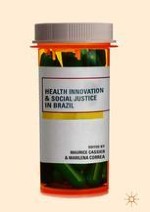2019 | OriginalPaper | Buchkapitel
10. Regulating the Copy Drug Market in Brazil: Testing Generics and Similar Medicines (1999–2015)
verfasst von : Marilena Correa, Maurice Cassier, Maria Andrea Loyola
Erschienen in: Health Innovation and Social Justice in Brazil
Aktivieren Sie unsere intelligente Suche, um passende Fachinhalte oder Patente zu finden.
Wählen Sie Textabschnitte aus um mit Künstlicher Intelligenz passenden Patente zu finden. powered by
Markieren Sie Textabschnitte, um KI-gestützt weitere passende Inhalte zu finden. powered by
